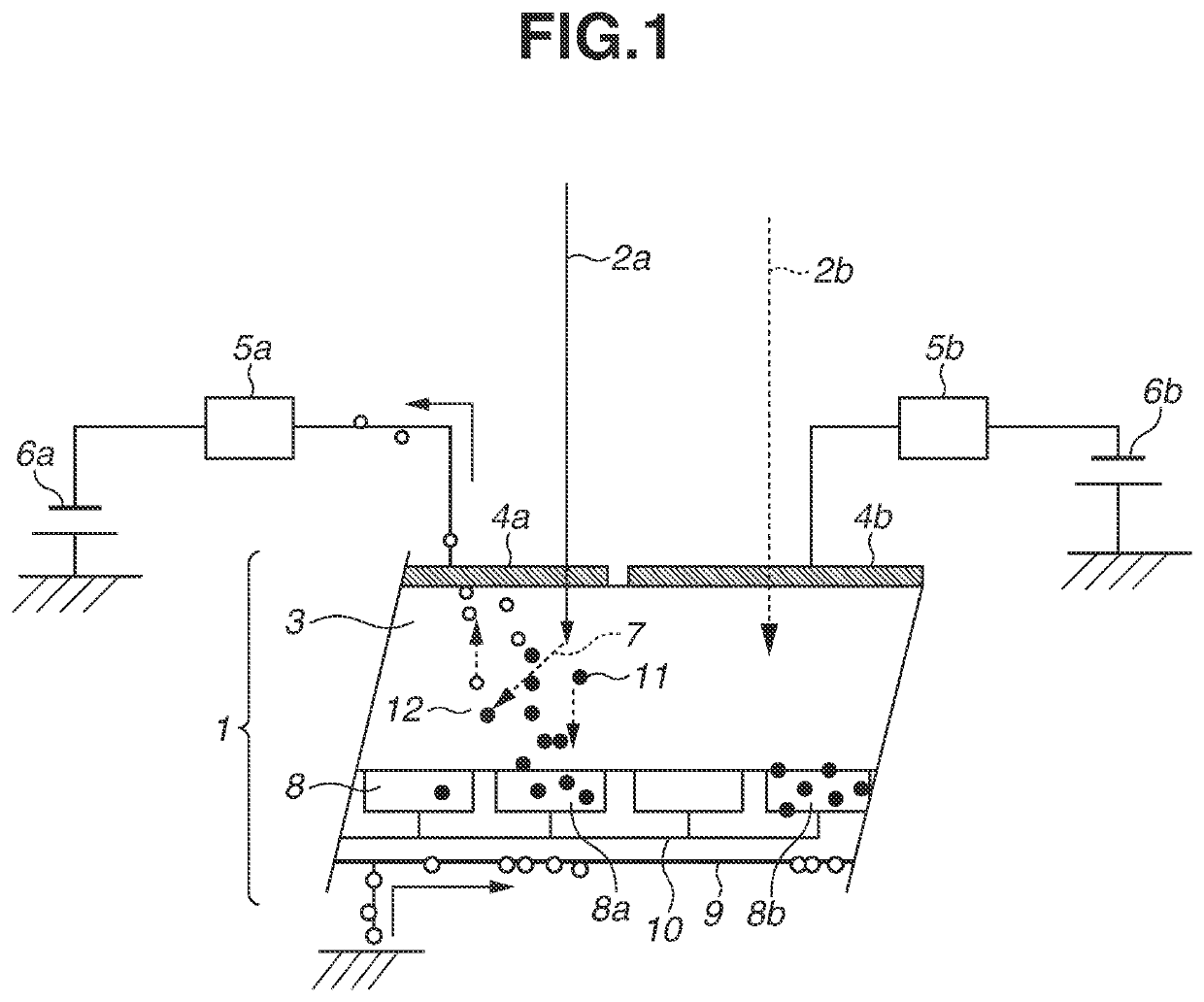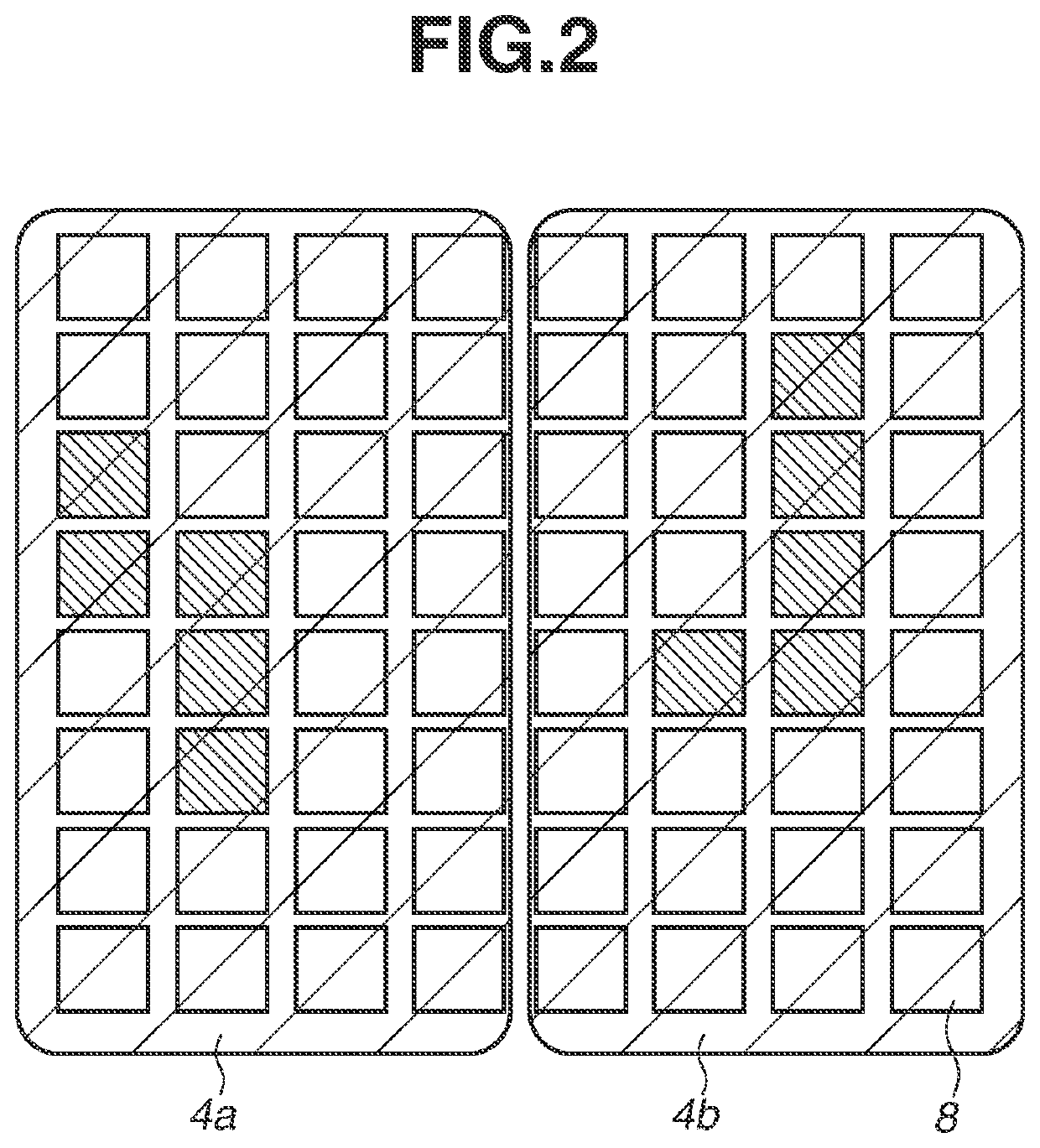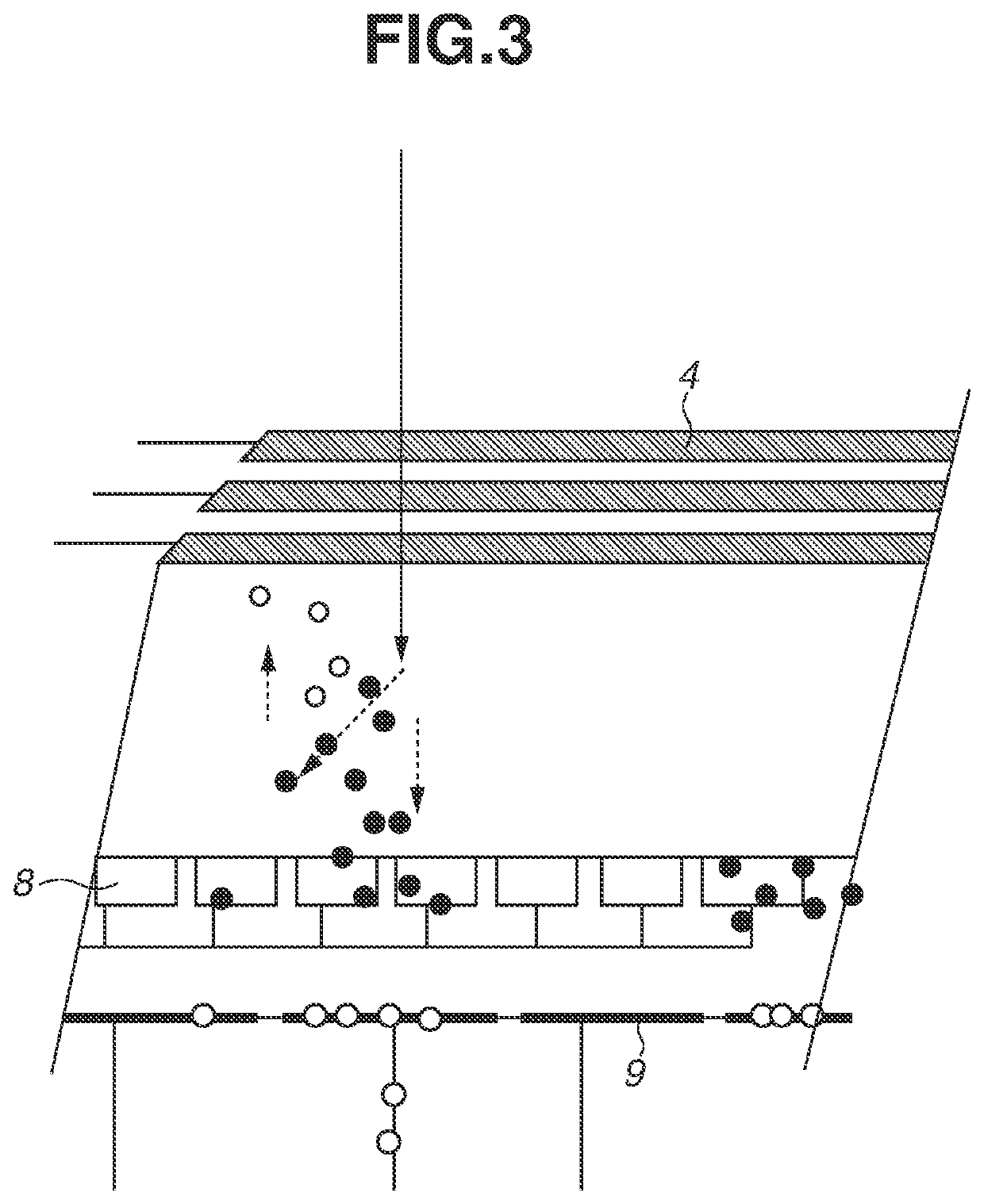Radiation detector and compton camera
a technology of radiometer and camera, applied in the field of radiometer, can solve the problem that the device cannot specify the incident time and energy of the radiation from the transferred image signal
- Summary
- Abstract
- Description
- Claims
- Application Information
AI Technical Summary
Benefits of technology
Problems solved by technology
Method used
Image
Examples
Embodiment Construction
[0016]While an X-ray is used as an example of radiation in exemplary embodiments, some embodiments are applicable to a gamma ray.
[0017]A first exemplary embodiment will be described below. Referring to FIG. 1, which is a partial sectional view of an X-ray detector 1 according to an embodiment, the X-ray detector 1 includes a semiconductor substrate 3 that is a layer that is sensitive to an X-ray, as illustrated by X-rays 2 (2a and 2b) in FIG. 1, and front-surface electrodes 4a and 4b (both may collectively referred to as front-surface electrode 4) and a back-surface electrode 9 formed on front and back surfaces of the semiconductor substrate 3, respectively. The plurality of front-surface electrodes 4a and 4b is provided on the surface of the semiconductor substrate 3 on which an X-ray is incident (radiation incident side). The X-ray detector 1 is a two-dimensional semiconductor device using a silicon (Si) substrate, such as a complementary metal-oxide semiconductor (CMOS) and a cha...
PUM
| Property | Measurement | Unit |
|---|---|---|
| charge accumulation | aaaaa | aaaaa |
| time | aaaaa | aaaaa |
| voltage | aaaaa | aaaaa |
Abstract
Description
Claims
Application Information
 Login to View More
Login to View More - R&D
- Intellectual Property
- Life Sciences
- Materials
- Tech Scout
- Unparalleled Data Quality
- Higher Quality Content
- 60% Fewer Hallucinations
Browse by: Latest US Patents, China's latest patents, Technical Efficacy Thesaurus, Application Domain, Technology Topic, Popular Technical Reports.
© 2025 PatSnap. All rights reserved.Legal|Privacy policy|Modern Slavery Act Transparency Statement|Sitemap|About US| Contact US: help@patsnap.com



